Running Injury-Free
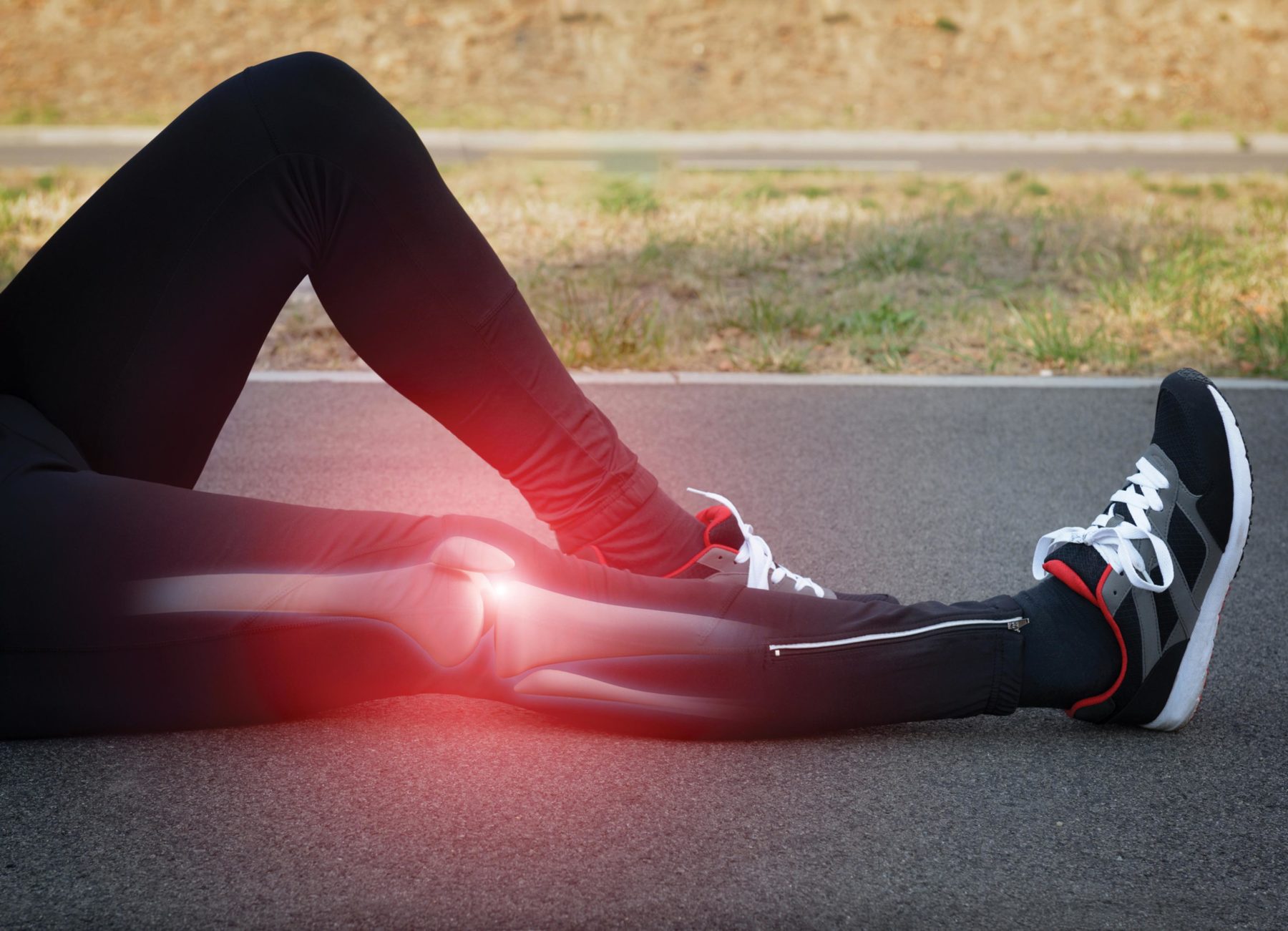
For many, the thought of lounging by the beach or a pool is a motivator to get ready for the summer season. Since running is one of the most popular ways Austinites shed fat, it’s important to learn and identify the most common causes of running injuries and what to do before one stops you from getting in your beach body miles.
Some experts estimate that over 80% of runners will sustain an injury at some point in their lives. We help a great deal of injured runners at our clinic, and well over half of those injuries are at least partially caused by a very specific type of hip muscle weakness.
So, how do you know if you are dealing with this common cause of running injury?
Jog-in-Place Knee Movement Test
Put on your running shoes and stand in front of a mirror so that you can observe your knees. Begin jogging in place and carefully watch the movement of your knees (works best to watch one knee at a time for multiple steps). Does your knee stay directly in line with your middle toe, or does it drop inward towards/past the big toe and the inside edge of the foot? If you can see your hips, do they stay fairly level or does the unweighted side drop significantly with each step?
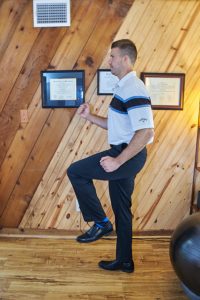
Although the movement of the knee is certainly influenced by the foot, hip muscle weakness is a primary culprit when the knee drops inward and/or the unweighted hip drops lower than the hip of your stance leg.
When either of these movements occurs, it puts abnormal strain through a number of areas of the leg and low back. If it’s happening when you jog in place, it is definitely happening with every full stride you take on your runs. These repetitive strains can lead to a wide variety of running injuries and pain, including low-back pain, hip bursitis, IT Band syndrome, patellofemoral syndrome, shin splints and plantar fasciitis.
So, if your jog-in-place test reveals these common precursors to injury, here are a few exercises to resolve them before they become a big problem.
Exercise #1: Side Plank Hip Burner Series
Although most of the exercises we give to runners are performed standing up, there are also some great running performance exercises that are not performed on your feet.
This “Hip Burner Series” combines the classic side plank exercise with two other exercises: lateral leg raises and clamshells. You’ll start by assuming a side plank position with both knees bent, making sure that your hips are forward so your thighs create a straight line with your trunk. Also, make sure to draw your belly button in towards your spine and keep your abs firm.
Stage 1: From this side plank position, perform repetitions of a lateral lift of the top leg up toward the ceiling. Performing this for multiple repetitions, keeping your hips forward and side plank held steady, is difficult enough for most people without additional resistance. However, if this is or becomes easy for you, add a resistance loop around your knees.
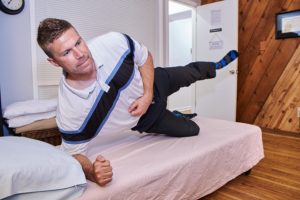
Stage 2: Again, holding the side plank position with both knees bent, now you will perform a clamshell exercise by keeping your feet together and lifting the top knee up away from the bottom knee. These repetitions focus more effort and strengthening into the rotational muscles of the hip. Lift the top knee high enough that there’s at least 1-2 feet of space between the knees.
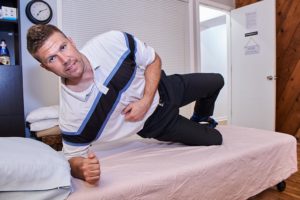
Complete two sets of each on both sides (right side plank, then left side plank) until you feel really good fatigue, and you’ll understand why I call this the “Hip Burner Series.”
Exercise # 2: Lateral Walking Against Resistance
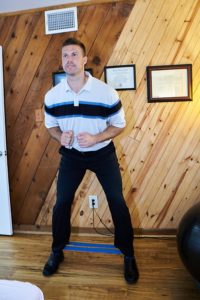
The stretch band can stay in the same position around your knees. Stand in a quarter-squat position with your back flat and your abdominals drawn in.
Against the resistance band, take a few side steps to the right and then to the left. As you do so, try not to lean your shoulders away from the direction you are stepping. Also, keep your knees over your toes and avoid leading the movement with the foot such that the knee is dropping inward. A quick pause between each step will help you hold good form.
Perform three to four sets until you feel a good fatigue in the hips or you can no longer maintain proper form.
Exercise # 3: Lunge with Rotational Resistance
This is a stationary back lunge with a challenging addition that you don’t normally see people utilizing. You’ll need to perform these next to something very stable that you can secure a resistance band around, and then secure that band around your knee that is further away from the band’s anchor point. For example, you’ve secured a stretch loop to a weight rack at about knee height and stepped a few feet away with the weight rack directly to your right. You then loop the stretch band around your left knee, and move far enough from the weight rack that slack is taken out and it’s pulling your knee directly to the right.
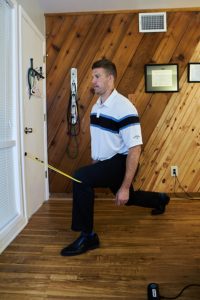
From this starting position, you can step back with your right foot and drop into a back lunge. The stretch band will be pulling your left knee inward, but it is your job to keep it from dropping inward. Keep your left knee in line with your foot and hip as you perform repetitions of the back lunge. This is a great way to really bias effort on the rotational muscles of the hip that are weak in most cases of running injury.
The above will be a great start to resolving the most common cause of running injuries, but if you really want to injury-proof those running legs, visit this video for even more: bit.ly/runinjuryfix. Now get out there and enjoy some beach body runs.
 Jarod Carter PT, DPT, MTC is the founder of Carter Physiotherapy, where active people in Austin go to quickly recover from injury so they can keep playing their sport, exercising, and enjoying life. Offering specialized hands-on manual therapy as well as online telehealth treatment options, all sessions are one-on-one with a Doctor of Physical Therapy and designed to get you maximal results as quickly as possible. Jarod is also the author of two books and has helped thousands of healthcare providers around the world to create private practices offering the highest level of treatment and care. Jarod provides monthly resources and discounts specifically for Austin Fit Magazine readers here: www.CarterPT.com/AFM
Jarod Carter PT, DPT, MTC is the founder of Carter Physiotherapy, where active people in Austin go to quickly recover from injury so they can keep playing their sport, exercising, and enjoying life. Offering specialized hands-on manual therapy as well as online telehealth treatment options, all sessions are one-on-one with a Doctor of Physical Therapy and designed to get you maximal results as quickly as possible. Jarod is also the author of two books and has helped thousands of healthcare providers around the world to create private practices offering the highest level of treatment and care. Jarod provides monthly resources and discounts specifically for Austin Fit Magazine readers here: www.CarterPT.com/AFM






